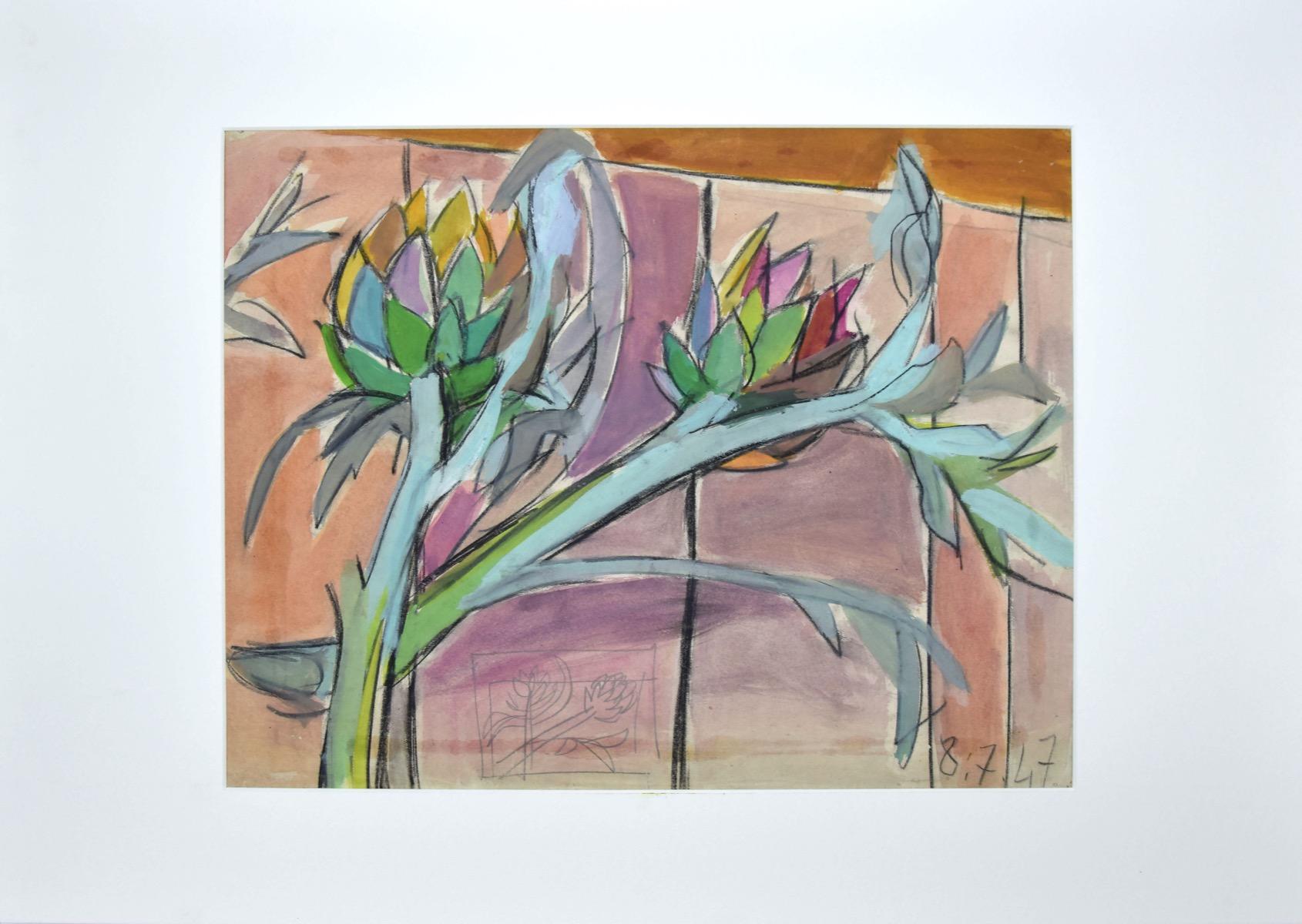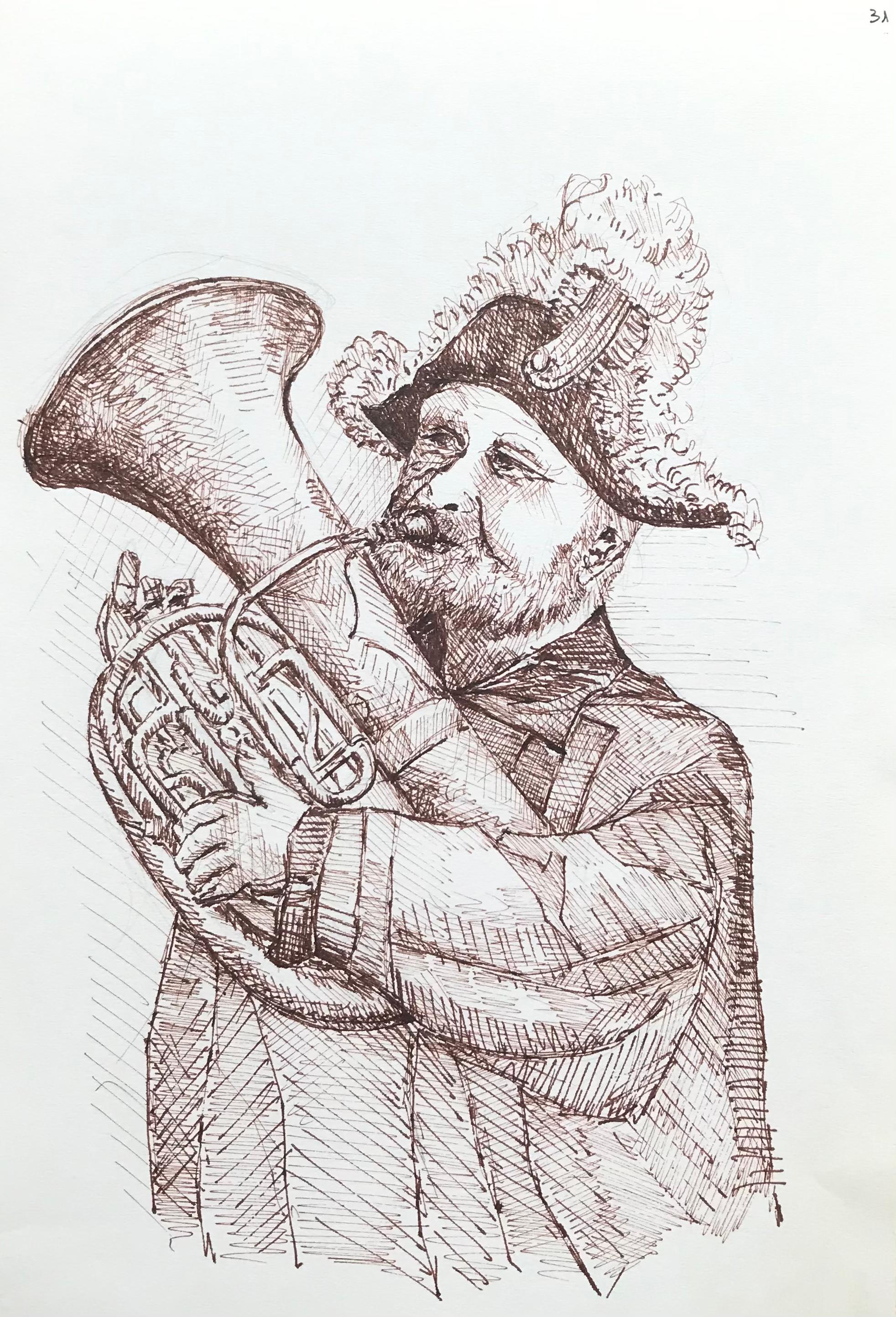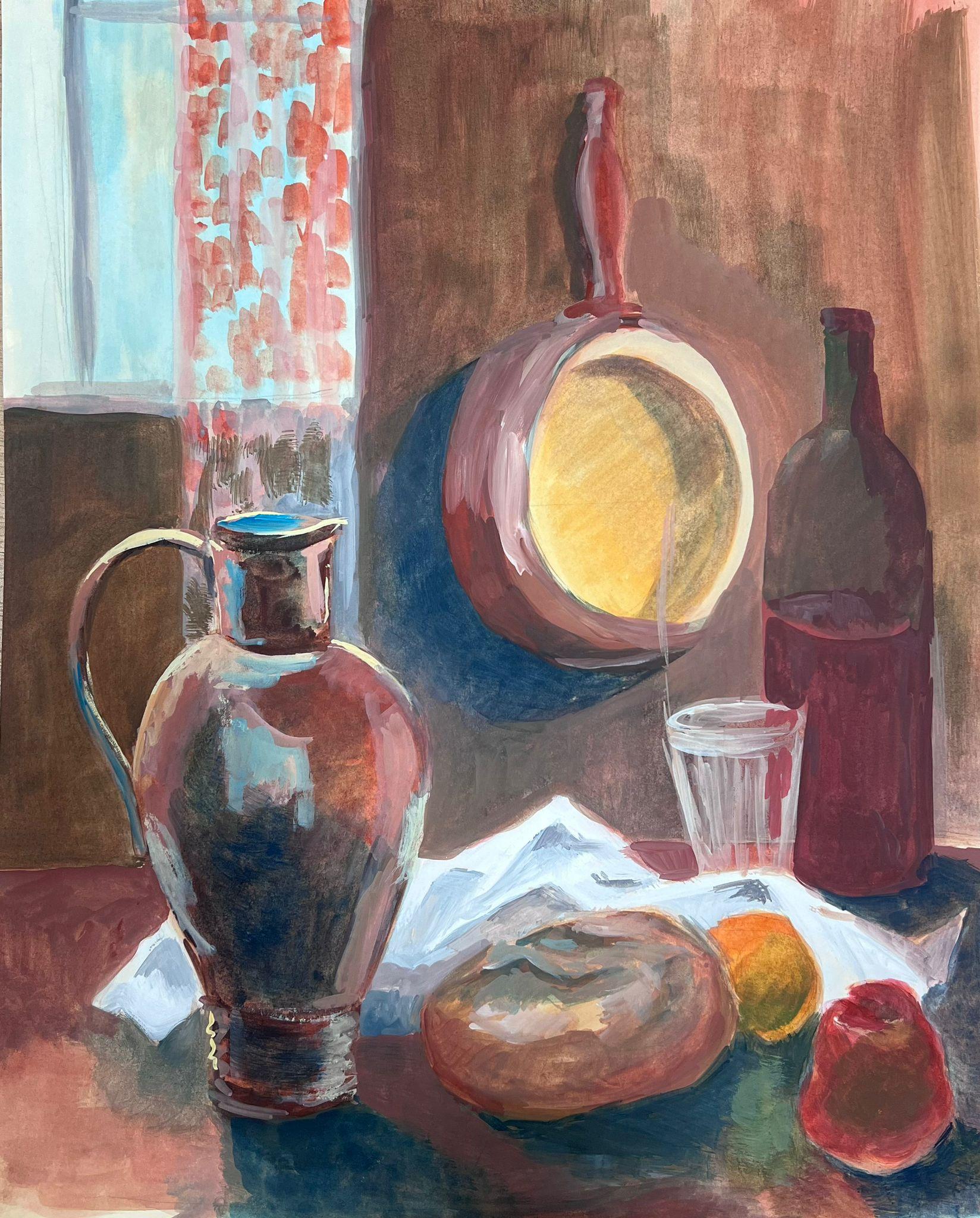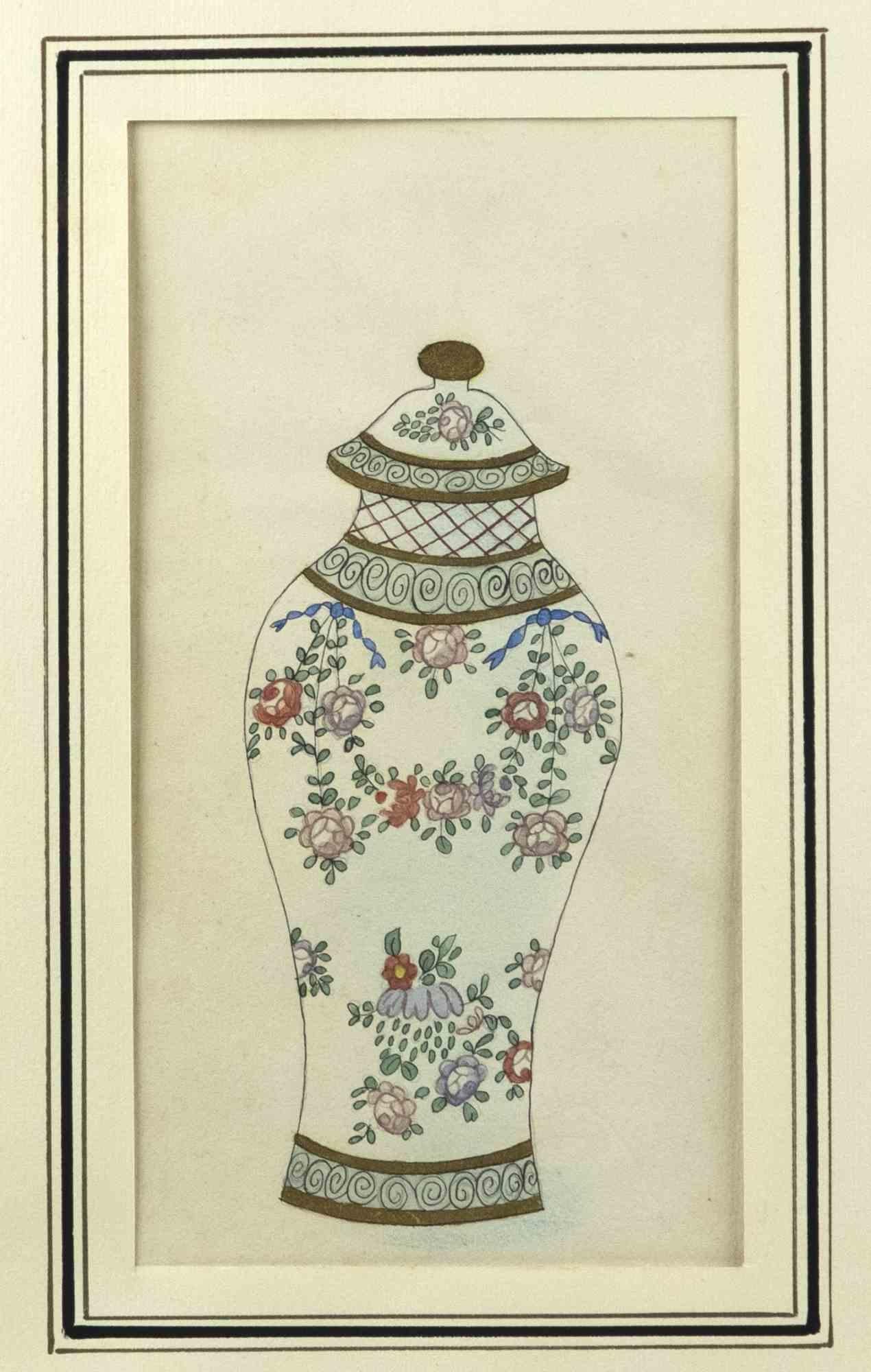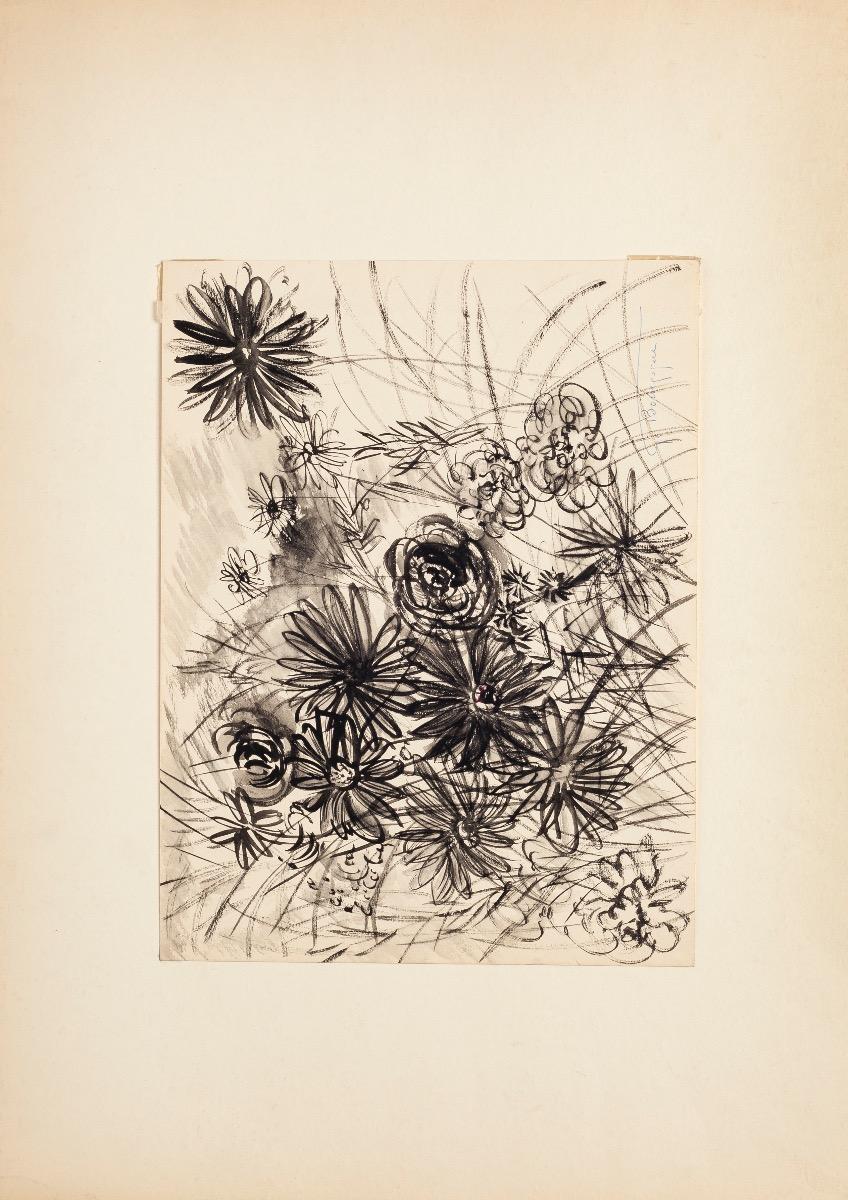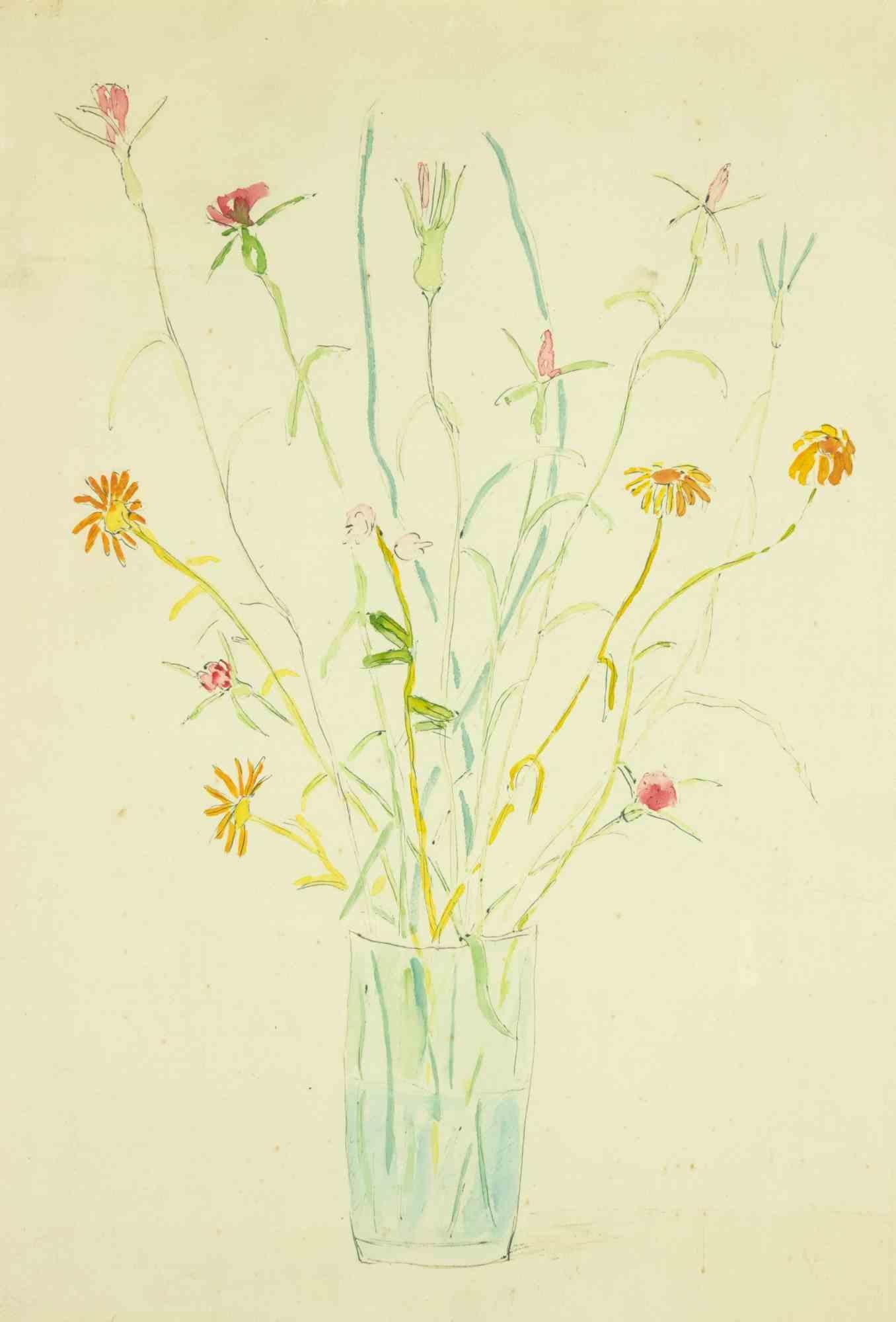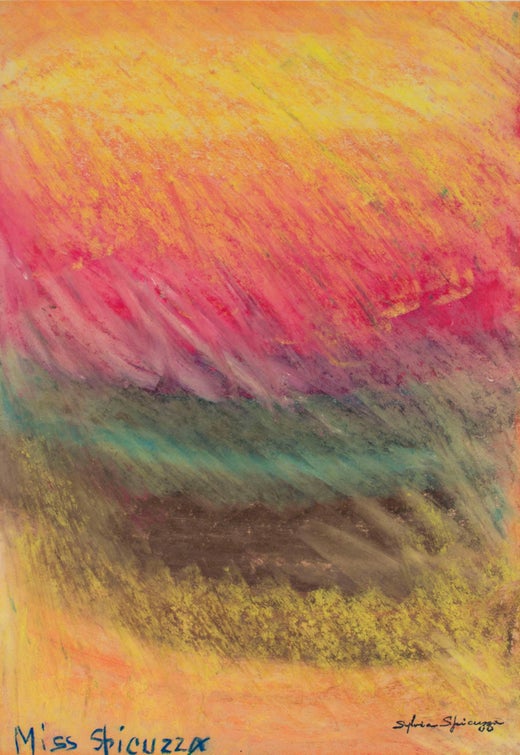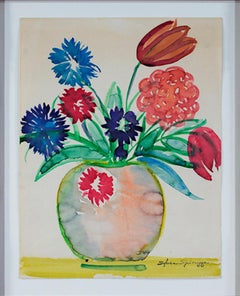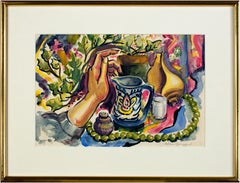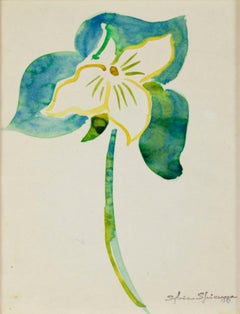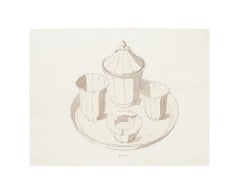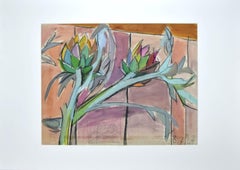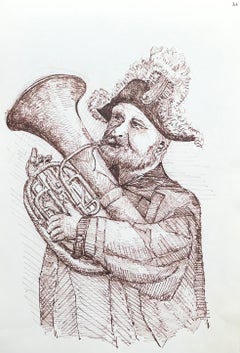
"Red Vase of Flowers on Orange Tablecloth, " Watercolor signed by Sylvia Spicuzza
Want more images or videos?
Request additional images or videos from the seller
1 of 6
Sylvia Spicuzza"Red Vase of Flowers on Orange Tablecloth, " Watercolor signed by Sylvia Spicuzzac. 1950
c. 1950
$2,025List Price
About the Item
- Creator:Sylvia Spicuzza (American)
- Creation Year:c. 1950
- Dimensions:Height: 17.25 in (43.82 cm)Width: 14.25 in (36.2 cm)
- Medium:
- Movement & Style:
- Period:
- Condition:
- Gallery Location:Milwaukee, WI
- Reference Number:Seller: 6073d1stDibs: LU60535528782
Sylvia Spicuzza
Born in 1908, Sylvia Spicuzza was the daughter of noted painter Francesco Spicuzza. Sylvia devoted herself to teaching art to the students of Lake Bluff Elementary School in Shorewood, WI. During this time Sylvia produced a magnificent body of work that was undiscovered until her death. Sylvia's work is rich, diverse and fascinating collection of drawings, watercolors and prints from the 1920's to the 1990's. Her style ranges from early figurative drawings to regionalism, art deco, lyrical abstractions of every conceivable subject (both real and imagined), as well as figurative paintings that reflect the work of Picasso and Ernest Max in the 1930's and 1940's. Biomorphic and organic, Modernist images are presented with Sylvia Spicuzza's own unique sense of style, humor and fantasy. Exhibitions David Barnett Gallery, Milwaukee, Wisconsin Education Northwestern University, MFA, Illinois
About the Seller
4.9
Platinum Seller
Premium sellers with a 4.7+ rating and 24-hour response times
Established in 1966
1stDibs seller since 2017
434 sales on 1stDibs
Typical response time: 2 hours
Authenticity Guarantee
In the unlikely event there’s an issue with an item’s authenticity, contact us within 1 year for a full refund. DetailsMoney-Back Guarantee
If your item is not as described, is damaged in transit, or does not arrive, contact us within 7 days for a full refund. Details24-Hour Cancellation
You have a 24-hour grace period in which to reconsider your purchase, with no questions asked.Vetted Professional Sellers
Our world-class sellers must adhere to strict standards for service and quality, maintaining the integrity of our listings.Price-Match Guarantee
If you find that a seller listed the same item for a lower price elsewhere, we’ll match it.Trusted Global Delivery
Our best-in-class carrier network provides specialized shipping options worldwide, including custom delivery.More From This Seller
View All"Vase of Flowers on Chartreuse Tablecloth, " Watercolor signed by Sylvia Spicuzza
By Sylvia Spicuzza
Located in Milwaukee, WI
"Vase of Flowers on Chartreuse Tablecloth" is a watercolor signed by Sylvia Spicuzza. This watercolor is of a simple flower arrangement. There are red tulips, blue, red, and pink chr...
Category
1950s American Modern Still-life Drawings and Watercolors
Materials
Watercolor
"Still Life with Artist's Hand" original watercolor signed by Sylvia Spicuzza
By Sylvia Spicuzza
Located in Milwaukee, WI
This still life is an unusual example of Sylvia Spicuzza's work, as most of her most significant output are geometric and biomorphic abstract images. The objects in the image - a sea shell, a pitcher, a heavy necklace - are objects the artist likely had at home and staged for the image. But of particular significance is the insertion of the artist's hand, as though she was reaching into the still life while she was painting. The hand has been a significant symbol of the artist throughout art history as a source of creation: Albrecht Dürer's 'Self Portrait at the Age of Twenty-Eight' (1500) highlights the artist's hand much like traditional images of Christ giving gestures of blessing. Likewise, Ernst Ludwig Kirchner's 'Self Portrait as a Soldier' (1915) shows the artist in military uniform but with a severed hand as a symbol of helplessness during the First World War. Another important comparison, given Spicuzza is a Midwestern artist, is Ivan Albright's magic realist work 'That Which I Should Have Done I Did Not Do (The Door)' at the Art Institute of Chicago. The massive painting...
Category
1950s Modern Figurative Drawings and Watercolors
Materials
Watercolor
"Leaves & Berries" giclée print after ca. 1950s original watercolor and collage
By Sylvia Spicuzza
Located in Milwaukee, WI
14.75 x 17.75 inches, artwork
22.88 x 25.75 inches, frame
Born in 1908, Sylvia Spicuzza was the daughter of noted painter Francesco Spicuzza. Sylvia devoted herself to teaching art ...
Category
1950s Modern Still-life Prints
Materials
Giclée, Watercolor
"Trillium" original watercolor painting by Sylvia Spicuzza
By Sylvia Spicuzza
Located in Milwaukee, WI
In this small painting, Sylvia Spicuzza presents the viewer with a simple trillium flower, the white petals framed by blue-green leaves.
10 x 7.25 inches, artwork
19.75 x 17.25 inch...
Category
1950s Modern Still-life Drawings and Watercolors
Materials
Watercolor
'Fruit Still Life' original watercolor and gouache on board, signed Yolanda
Located in Milwaukee, WI
Though signed "Yolanda," the artist of this gouache and watercolor painting is unknown. The still life, contained and symmetrical, is dominated by the form of a pear. On either side,...
Category
Early 20th Century American Modern Still-life Drawings and Watercolors
Materials
Watercolor, Gouache, Board
"Homage to Daniel Smith: Premier Triple African Violets, " by David Barnett
By David Barnett
Located in Milwaukee, WI
"Homage to Daniel Smith: Premier Triple African Violets" is an original mixed media piece by David Barnett. The artist signed the piece lower right and used iridescent acrylic, water...
Category
Early 2000s Contemporary Still-life Drawings and Watercolors
Materials
Ink, Mixed Media, Acrylic, Watercolor
You May Also Like
Porcelain Service - Original Ink and Watercolor - Late 19th Century
Located in Roma, IT
Porcelain service is an original china ink and watercolor drawing on ivory-colored paper realized by a French Anonymous Artist of the late 19th Century.
In very good conditions.
This artwork represents porcelain drinking service...
Category
19th Century Modern Still-life Drawings and Watercolors
Materials
Ink, Watercolor
Tropical Vegetation - Original Pencil and Watercolor - 1917
Located in Roma, IT
Mediterranean Vegetation is an original watercolored pencil drawing on ivory-colored paper, realized by Anonymous French Artist of the early 20th Century.
In very good conditions.
...
Category
1910s Modern Still-life Drawings and Watercolors
Materials
Pencil, Watercolor
Flowers - Drawing by Albert Fernand-Renault - 1950s
By Albert Fernand-Renault
Located in Roma, IT
Flowers is a drawing realized in 1950s by Albert Fernand-Renault.
Watercolour and ink on paper. Hand-signed.
Good condition with diffused foxing and a cutting at the top left margi...
Category
1950s Modern Figurative Drawings and Watercolors
Materials
Ink, Watercolor
1950's Modernist/ Cubist Painting - Man Playing Tuba
By Bernard Labbe
Located in Cirencester, Gloucestershire
French Landscape
by Bernard Labbe (French mid 20th century)
original watercolour on artist paper, unframed
size: 11.75 x 8 inches
condition: very good and ready to be enjoyed.
prov...
Category
Mid-20th Century Modern Portrait Paintings
Materials
Watercolor
1950's Modernist/ Cubist Painting - Fisherman and His Rod
By Bernard Labbe
Located in Cirencester, Gloucestershire
French Landscape
by Bernard Labbe (French mid 20th century)
original watercolour on artist paper, unframed
size: 12.5 x 9.5 inches
condition: very good and ready to be enjoyed.
pro...
Category
Mid-20th Century Modern Portrait Paintings
Materials
Watercolor
Exquisite Oval Floral Watercolor with Vibrant Bouquet Botanical
Located in Cirencester, Gloucestershire
Oval Floral Watercolor
watercolour on artist paper, stuck on black paper
painting: 12.75 x 10 inches
provenance: private collection
condition: very good and sound condition
Category
Mid-20th Century Modern Still-life Paintings
Materials
Watercolor

